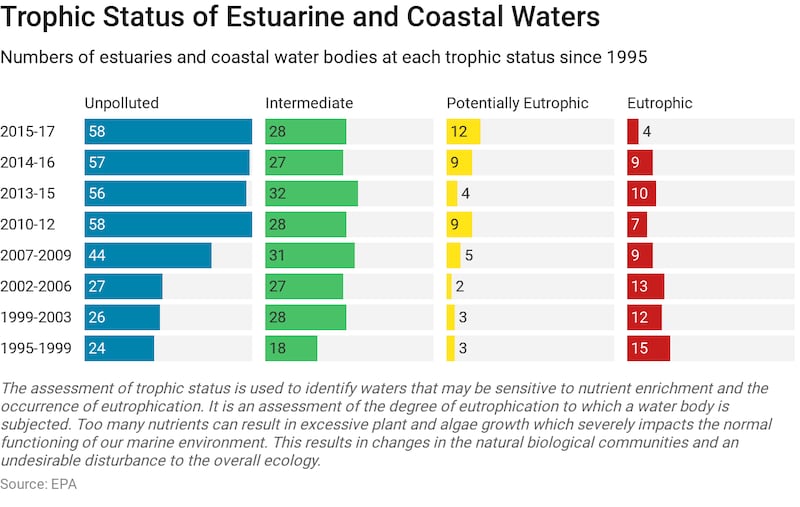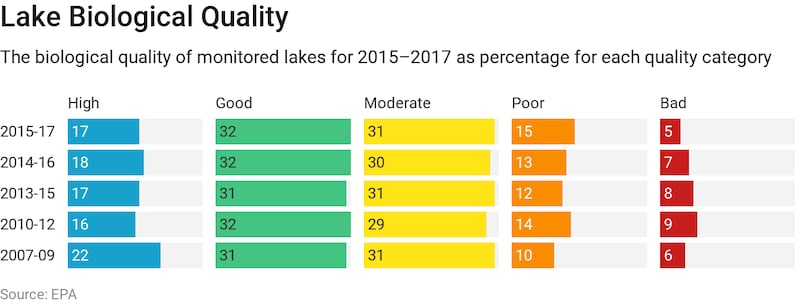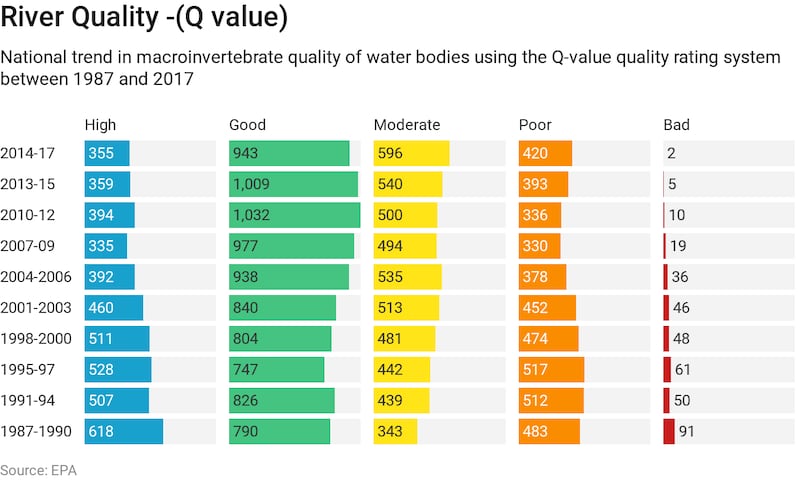A deterioration of water quality in Irish fresh and sea waters has been described as "completely unacceptable" by the Environmental Protection Agency (EPA).
Some 269 waterways in Ireland, which include rivers, coastal areas, canals, estuaries and lakes, deteriorated in quality between 2015 and 2017.
Human activity, and, in particular, the presence of nitrogen and phosphorus from farming is blamed for the worsening trend. Nitrogen and phosphorus are used in artificial fertilisers.

Lakes in counties Cavan and Monaghan have the highest phosphorus levels in the State.
EPA director Dr Matt Crowe said the findings in the report are "not good and tell us that water quality is still getting worse in some areas despite improvements in others".

He anticipated the local authority waters programme and the agricultural sustainability support and advice programme will make a difference to water quality.
EPA programme director Andy Fanning said the latest results are an "early warning that we need to address the sources and the pathways by which these nutrients make their way into our rivers and lakes".
The EPA report found 197 river water bodies have improved in quality but 269 water bodies have deteriorated compared with the last full assessment in 2013-2015.

This has led to a net overall decline in water quality of 3 per cent across the country (72 water bodies).
There have been some positive changes. Serious pollution continues to decrease. Only two river water bodies were seriously polluted in the latest reporting period compared to five in 2013-2015.
Historically there were 91 seriously polluted water bodies in the late 1980s.
Fish kills are at an all-time low with only 14 reported in 2017 compared to 31 in 2016. The number of fish kills in Irish waters has dramatically fallen since the worst years between 1987 and 1989 when more than 100 such incidents were reported.
The report singled out the Tolka river in Dublin as one that is regularly affected by fish kills.








